Fleabanes, of the Erigeron genus, are easy to identify when they bloom: they have small daisy-like flowers, usually with white or pinkish rays and a yellow center, but in contrast to daisies and asters, their flower rays are extremely narrow and very numerous.
Distinguishing between the different species of Erigeron, however, can be tricky. Where I live, there are four species, and the flowers all look similar. Erigeron annuus is easily distinguished from the other fleabanes native to Pennsylvania by the basal leaves, which are pictured below.
Dimensions and height
When I've grown this plant or seen it in the wild, it's tended to grow about 3 feet tall, but I've seen sources saying it can grow as tall as 5 feet. Under poorer conditions, it may only grow to about 2 feet.
The leaves are 3-5 inches long. The flowers themselves are small, usually around 10-14 mm wide.
Identification when not in bloom
When not in bloom, Erigeron annuus can be confused with a number of other wildflowers.
The basal rosettes of leaves, in particular, look a lot like the leaves of black eyed susan or purple coneflower, especially of first-year plants. The leaves are slightly less sturdy than those of black eyed susan or coneflowers. Also note that on Erigeron annuus, the base of the leaf gradually tapers to where it attaches to the stem or base of the plant. On a black-eyed susan, the leaf base curves inward, leaving a well-defined leaf stem (petiole) that connects to the base of the plant or the stem.


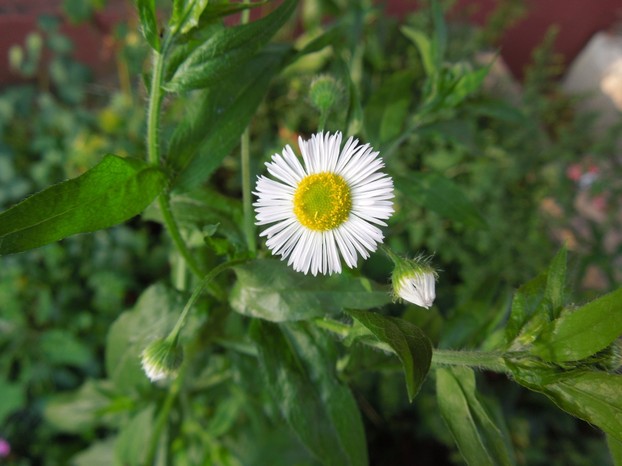
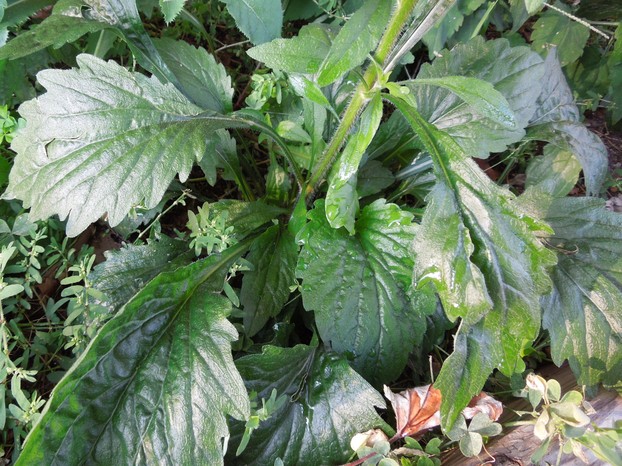



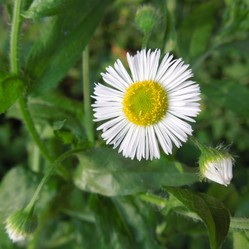

 The Shaming of Femininity and Elevation of Masculinityon 07/13/2017
The Shaming of Femininity and Elevation of Masculinityon 07/13/2017
 What is Genderqueer or Non-Binary Gender?on 10/16/2015
What is Genderqueer or Non-Binary Gender?on 10/16/2015
 Resources for Learning Spanish Free Onlineon 04/13/2016
Resources for Learning Spanish Free Onlineon 04/13/2016
 Ways Native Plants Can Help Control Invasive Plantson 05/26/2016
Ways Native Plants Can Help Control Invasive Plantson 05/26/2016
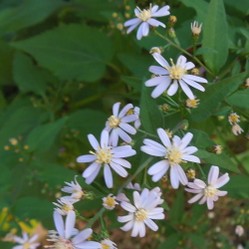
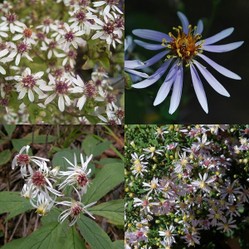
Questions? Comments? Feedback?
Seed viability is hugely different for different species, and it also can depend on local conditions (including what organisms are present that might eat the seeds). I don't know anything about the seed viability of this species, over a long time. It is common and the seeds are light and wind-dispersed so I think even if the viability was low after the first year or two, it wouldn't affect the abundance of this species much, because there seems to be a pretty steady and widespread supply of this plant's seeds that freely blow in from elsewhere.
Like, this is a species I've seen come up in rooftop gardens, where soil is brought in from the outside...there are clearly a lot of seeds just blowing around in the environment.
Seed viability I think is more of a question of concern for species that have slower-dispersed seeds.
As to references, I use Plants of Pennsylvania by Rhoads & Block as my master reference, it's local to the area in which I live. If you live in or adjacent to Pennsylvania, I recommend it as it is excellent. It has the botanical rigor of a botanical manual, but is more accessible, has a few illustrations, an outstanding glossary, and a little more detailed information about habitat and distribution for most plants, than a book like Gray's Botany has.
Hello,
do you know, how many yaers the seeds survive in the soil?
I heard something about five years...
Can you also mention some bibliographical reference?
Thanks
There are many types of fleabane, and they look similar, so it's likely that you've found one of them! Some have showier blooms than others. I think Philadelphia fleabane is the one most likely to be grown in gardens. Where I live, in Pennsylvania, there are four species of fleabane: this is annual, two are biennials, and one is a perennial.
There are also some asters and other aster-family plants that look similar. They have thicker flower rays though.
This is a wildflower I believe that is quite common where I live. I often find it in fields and along the side of the road and pick to add to wildflower bouquets. I've never thought of putting it in the garden, if it is the same plant I'm familiar with.
Thank you. Mine are quite tall - 3 feet or more I'd say.
Ahh, I didn't mention height or dimensions...this is a big omission! Thanks for bringing that up. It can get tallish--one source said up to 3 and a half feet (and that's about how tall mine grew), but my botany book says it grows 2-5 feet, so I think taller is possible.
I believe this is the tall flowering plant growing at the side of my house. It sprang up on it's own and has light pink flowers. Could this possibly be the one you are writing about? I didn't see you mention height.